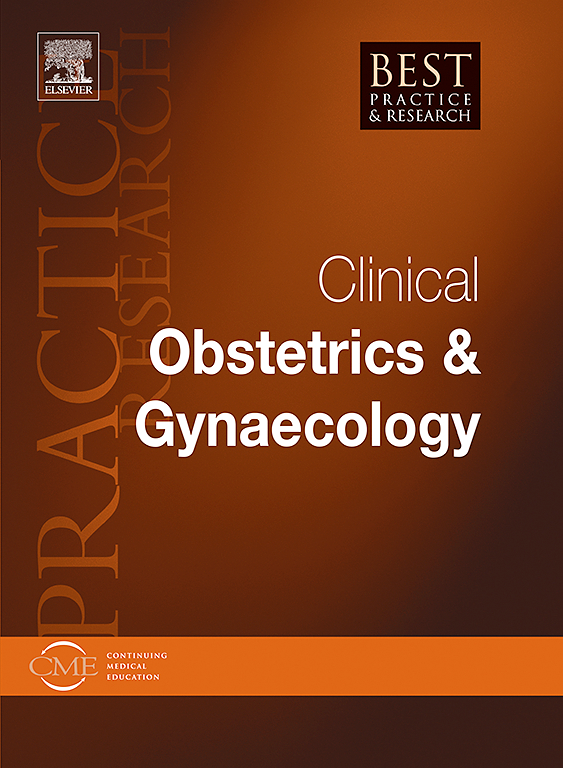Do all women after hypertensive diseases of pregnancy have the same long-term risk of cardiovascular disease in later life?
IF 4.1
2区 医学
Q1 OBSTETRICS & GYNECOLOGY
Best Practice & Research Clinical Obstetrics & Gynaecology
Pub Date : 2025-03-20
DOI:10.1016/j.bpobgyn.2025.102597
引用次数: 0
Abstract
During pregnancy, most maternal organ systems increase in function or size. This is indeed also the case for cardiovascular function and maternal hemodynamics. Most systems show enormous changes that put a serious strain on these systems. Gestational complications develop when an organ system is unable to meet the increased physiological demands of pregnancy. Pregnancy can be considered as the ultimate stress test for these organ systems. Preeclampsia and gestational hypertension may be considered as a derangement of the hemodynamic and cardiovascular system during pregnancy. During later life the hemodynamic and cardiovascular system again derails when aging has its toll. Cardiovascular morbidity and mortality are greatly increased after pregnancies complicated by hypertensive disorders of pregnancy. These complications must be acknowledged by health care providers as a risk factor for later cardiovascular disease. All women after HDP should be followed scrutinous at least during the first 5–10 years after their deliveries. The focus of the follow-up should be on the development of hypertension. Women with an increased risk are those with early-onset preeclampsia, recurrent preeclampsia and preeclampsia in the last pregnancy. Uncomplicated pregnancies after pregnancies complicated by HDP improve the prognosis substantially. Multiplet pregnancies with HDP tend to have lower risks for CVD in later life than singleton pregnancies with HDP.
妊娠期患有高血压疾病的女性在以后的生活中患心血管疾病的长期风险是否相同?
在怀孕期间,大多数母体器官系统的功能或大小都会增加。这确实也是心血管功能和母体血流动力学的情况。大多数系统显示出巨大的变化,给这些系统带来了严重的压力。当一个器官系统不能满足妊娠增加的生理需求时,妊娠并发症就会发生。怀孕可以被认为是对这些器官系统的终极压力测试。先兆子痫和妊娠期高血压可能被认为是妊娠期间血液动力学和心血管系统的紊乱。在以后的生活中,血液动力学和心血管系统在衰老时再次出现问题。妊娠合并妊娠期高血压疾病后,心血管疾病的发病率和死亡率大大增加。这些并发症必须被卫生保健提供者视为日后心血管疾病的危险因素。所有HDP后的妇女至少在分娩后的头5-10年内都应该仔细观察。随访的重点应放在高血压的发展上。风险增加的女性是那些早发性子痫前期,复发性子痫前期和最后一次怀孕的子痫前期。妊娠合并HDP后无并发症妊娠可显著改善预后。患有HDP的多胎妊娠比患有HDP的单胎妊娠在晚年患CVD的风险更低。
本文章由计算机程序翻译,如有差异,请以英文原文为准。
求助全文
约1分钟内获得全文
求助全文
来源期刊
CiteScore
9.40
自引率
1.80%
发文量
113
审稿时长
54 days
期刊介绍:
In practical paperback format, each 200 page topic-based issue of Best Practice & Research Clinical Obstetrics & Gynaecology will provide a comprehensive review of current clinical practice and thinking within the specialties of obstetrics and gynaecology.
All chapters take the form of practical, evidence-based reviews that seek to address key clinical issues of diagnosis, treatment and patient management.
Each issue follows a problem-orientated approach that focuses on the key questions to be addressed, clearly defining what is known and not known. Management will be described in practical terms so that it can be applied to the individual patient.

 求助内容:
求助内容: 应助结果提醒方式:
应助结果提醒方式:


